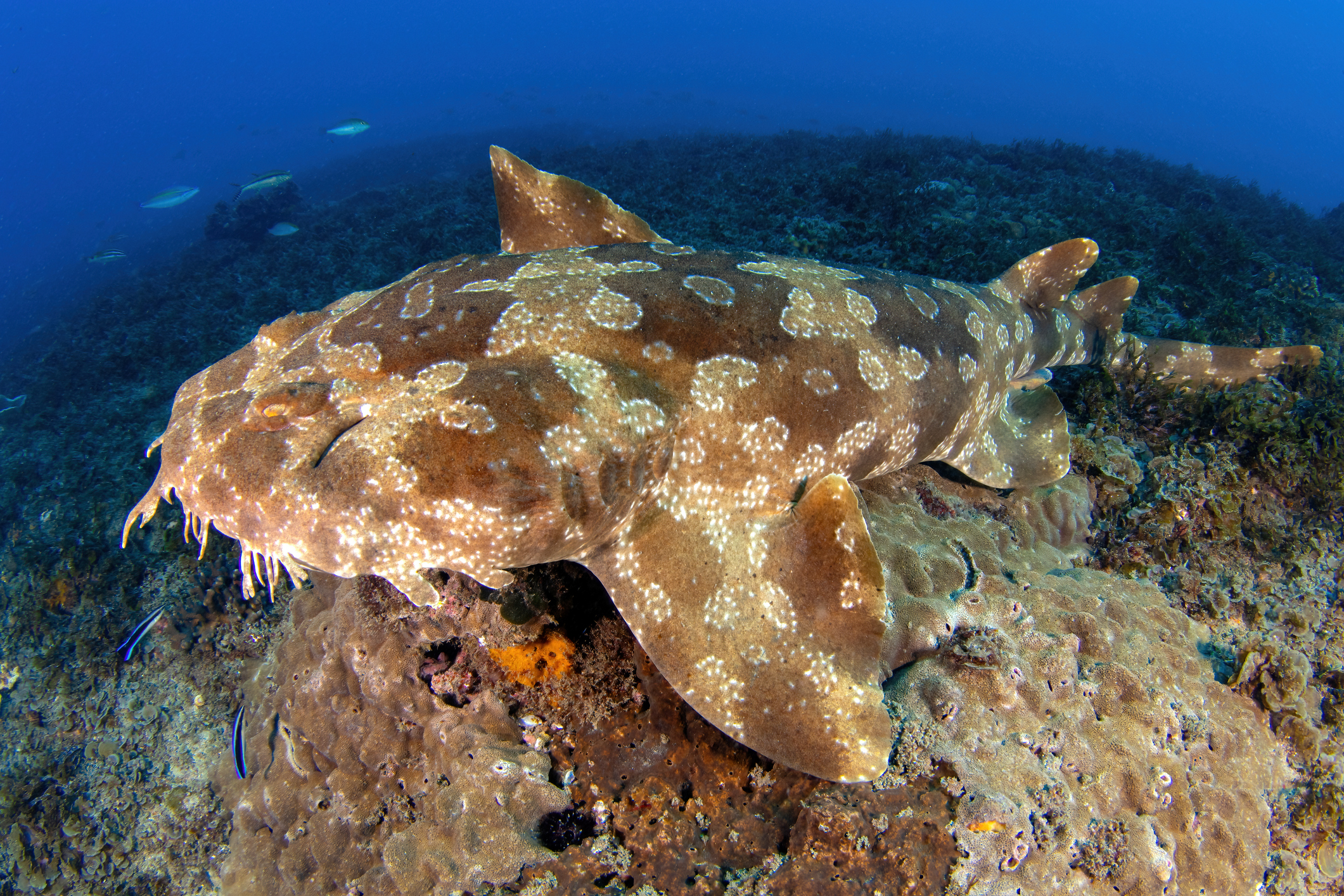
The term “wobbegong” comes from the Australian Aboriginal word meaning “shaggy beard.” This name perfectly describes the distinctive appearance of the spotted wobbegong, a wacky-looking species of carpet shark.
Join us as we dive into the world of this intriguing creature, exploring its habitat, diet, reproduction, and more.
What is a spotted wobbegong?
The spotted wobbegong, scientifically known as Orectolobus maculatus, is part of the Orectolobidae family within the order of Orectolobiformes, commonly referred to as carpet sharks. Typically growing to a length of 1.5 to 1.8 meters, the largest recorded individual reached an impressive 3.2 meters.
Key characteristics
The spotted wobbegong is known for a few key characteristics, primarily the tassel-like skin flaps around its snout which give it the name “shaggy beard”. Their greenish-brown body and flattened body make it adept at hiding from predators and prey alike.
Where do spotted wobbegongs live?
Spotted wobbegongs are primarily found in the coastal regions that surround Australia, typically the Coral Sea and Tasman Sea. They prefer warm, shallow waters but can be found down to depths of around 100 meters. These sharks are often seen living among the bottoms of coral and rocky reefs, as well as on sandy sea floors.
Diet and hunting technique
Spotted wobbegongs are nocturnal hunters, feeding on fish, crayfish, crabs, and octopus. They utilise a hunting technique known as ambush predation, where they lay in wait for their prey to pass by. This is where their unique camouflage comes into play. Their ability to sense prey through electrolocation allows them to remain stationary on the seafloor and detect nearby movements.
Reproduction and lifecycle of a spotted wobbegong
During the breeding season, male spotted wobbegongs compete for the chance to court a female, who releases chemical pheromones into the water to attract mates.
Spotted wobbegongs are ovoviviparous, meaning they produce eggs that hatch inside them before giving birth to live young. A female can give birth to up to 20-37 pups at a time, each of which becomes self-sufficient immediately after birth. The gestation period of wobbegongs lasts almost 12 months.
Once they’re away from their mothers, wobbegongs can live for up to 30 years or more!
Additional facts you should know
- Species variety: There are around 11 other species of wobbegong, including the western wobbegong, which can also be found at Blue Planet Aquarium alongside our spotted wobbegong.
- Behaviour: Wobbegongs are generally docile and sluggish during the day, and they’re not considered a threat to humans. However, they will bite if provoked.
- Feeding: Due to their large jaws, spotted wobbegongs are capable of swallowing prey whole if they need to.
Discover more about the fascinating world of the spotted wobbegong and other marine creatures at Blue Planet Aquarium by booking your tickets now! Dive into our exhibits and experience the underwater wonders up close!
Type
Shark
What do they eat?
Fish, crayfish, crabs and octopus
Size
1.5-1.8 metres
Water Type
Warm, shallow waters
Where are we?
Australia
